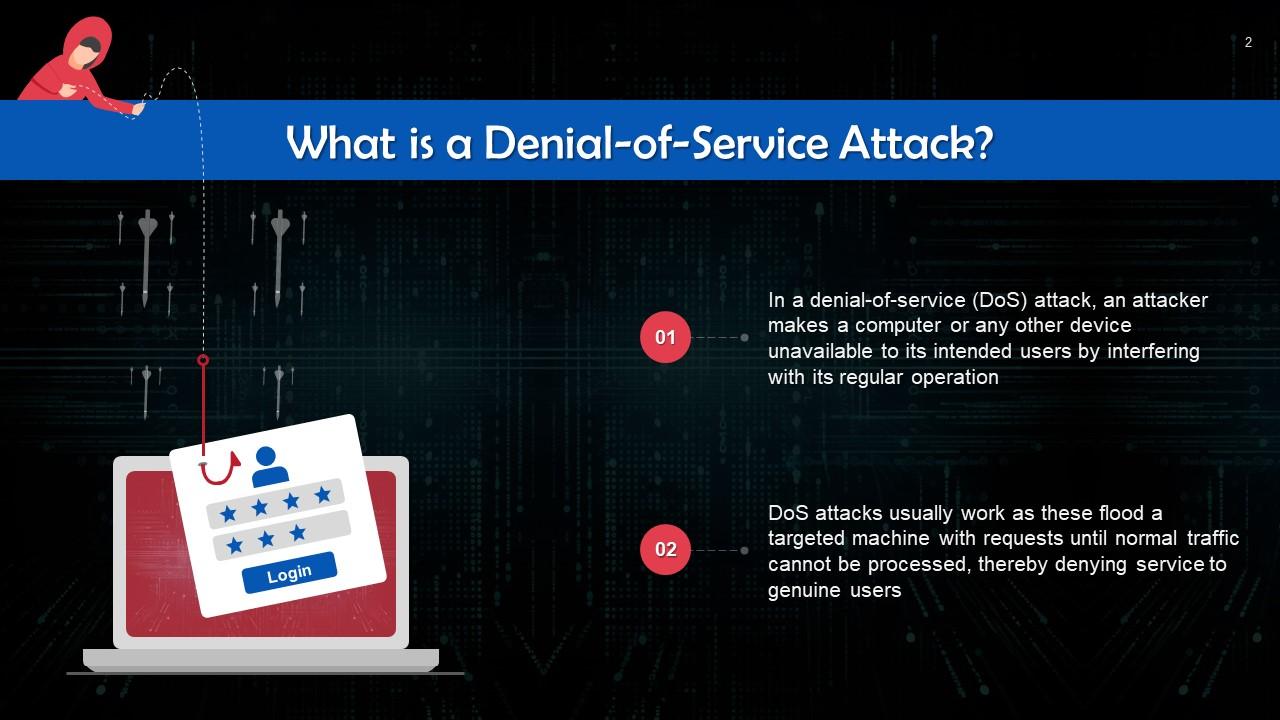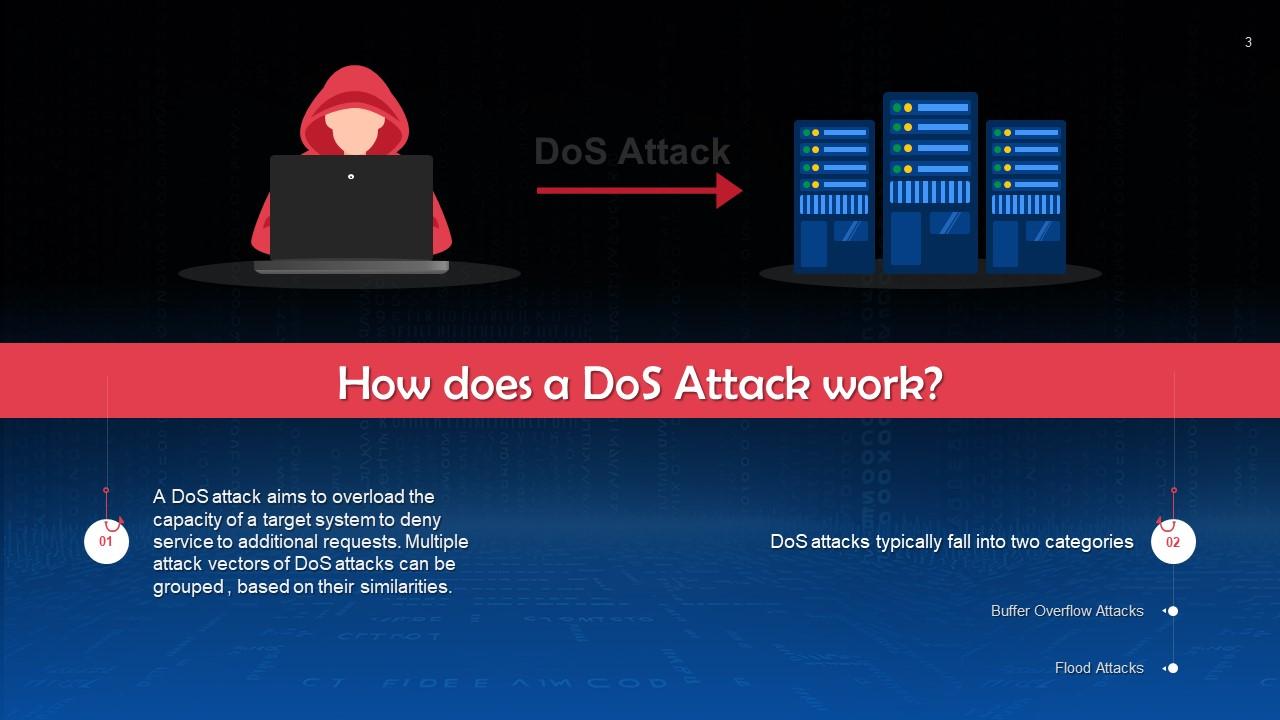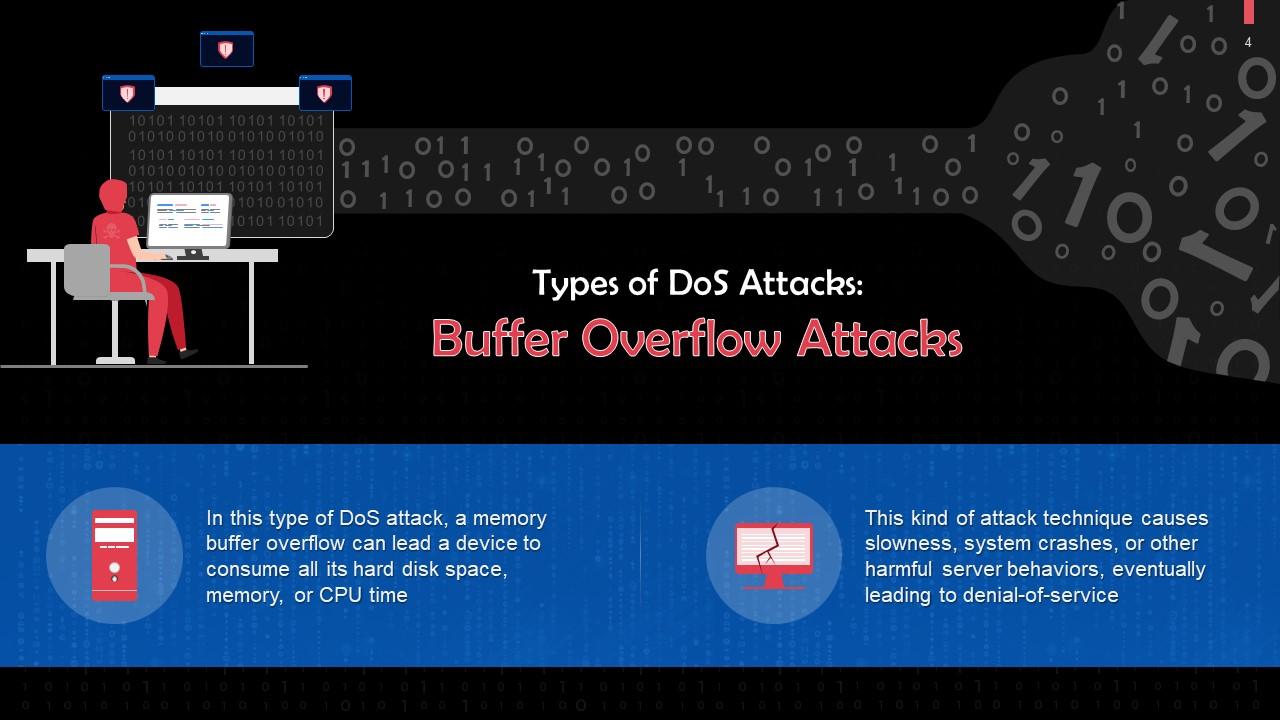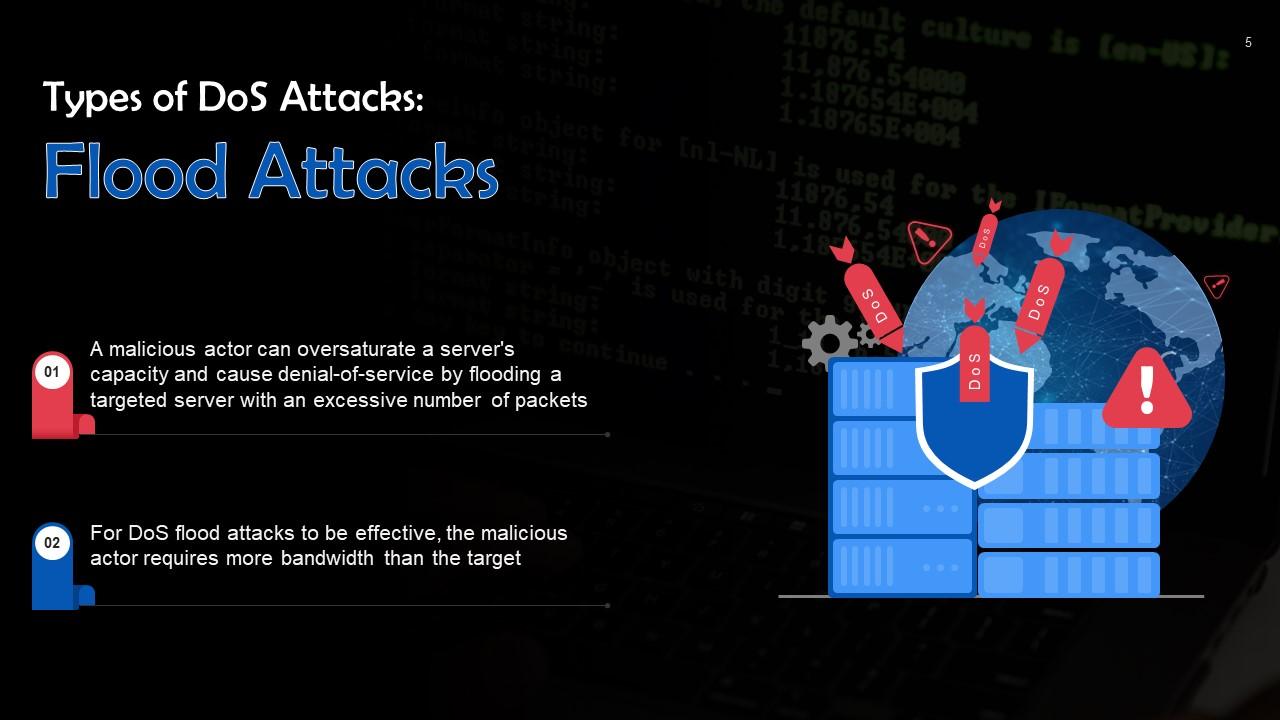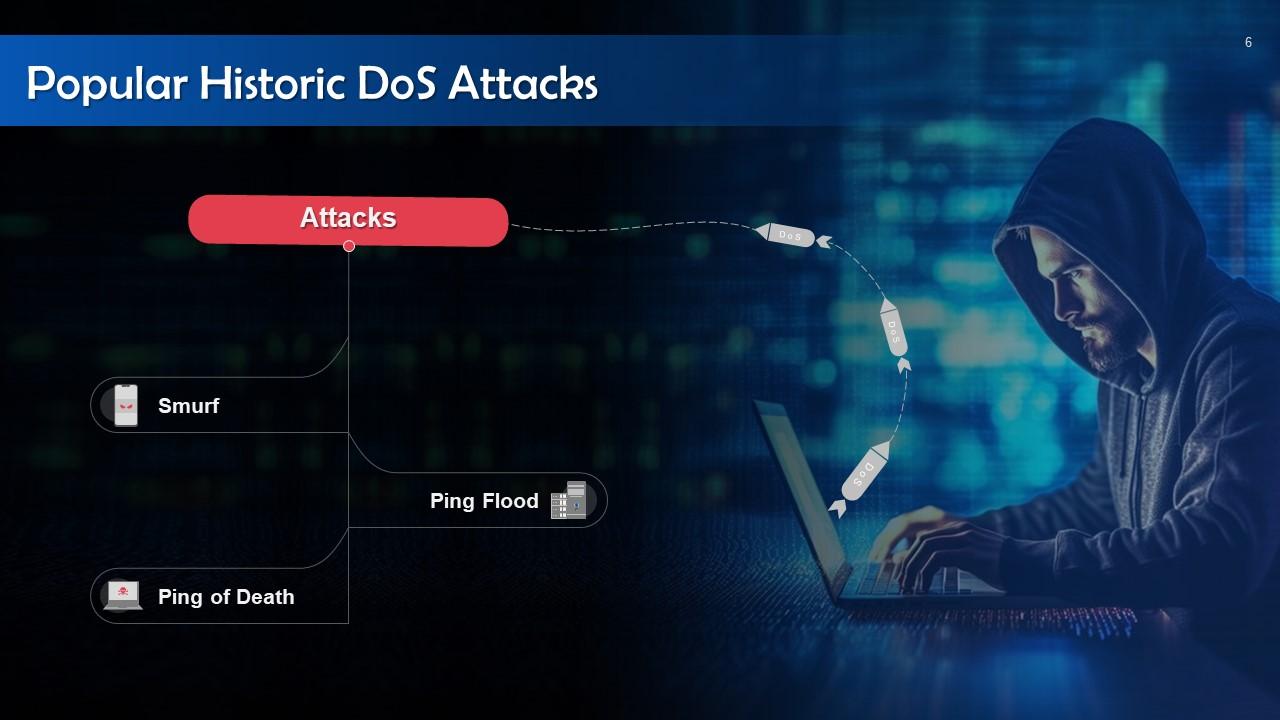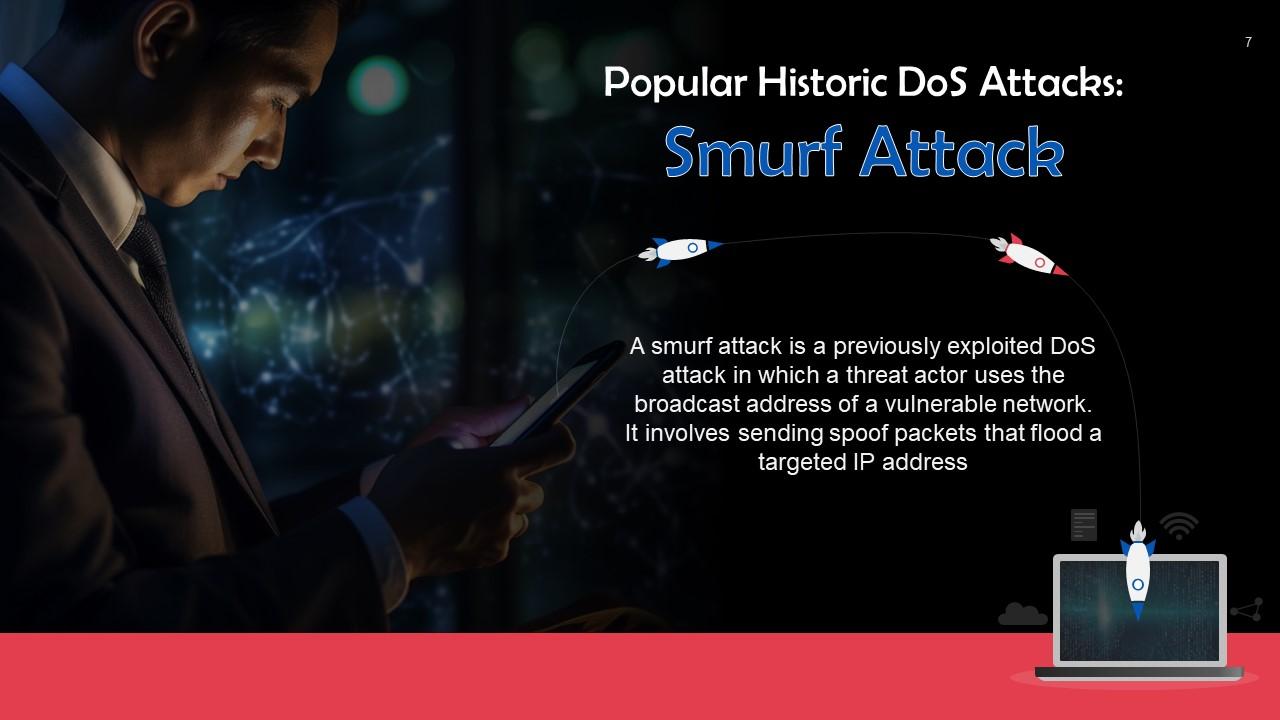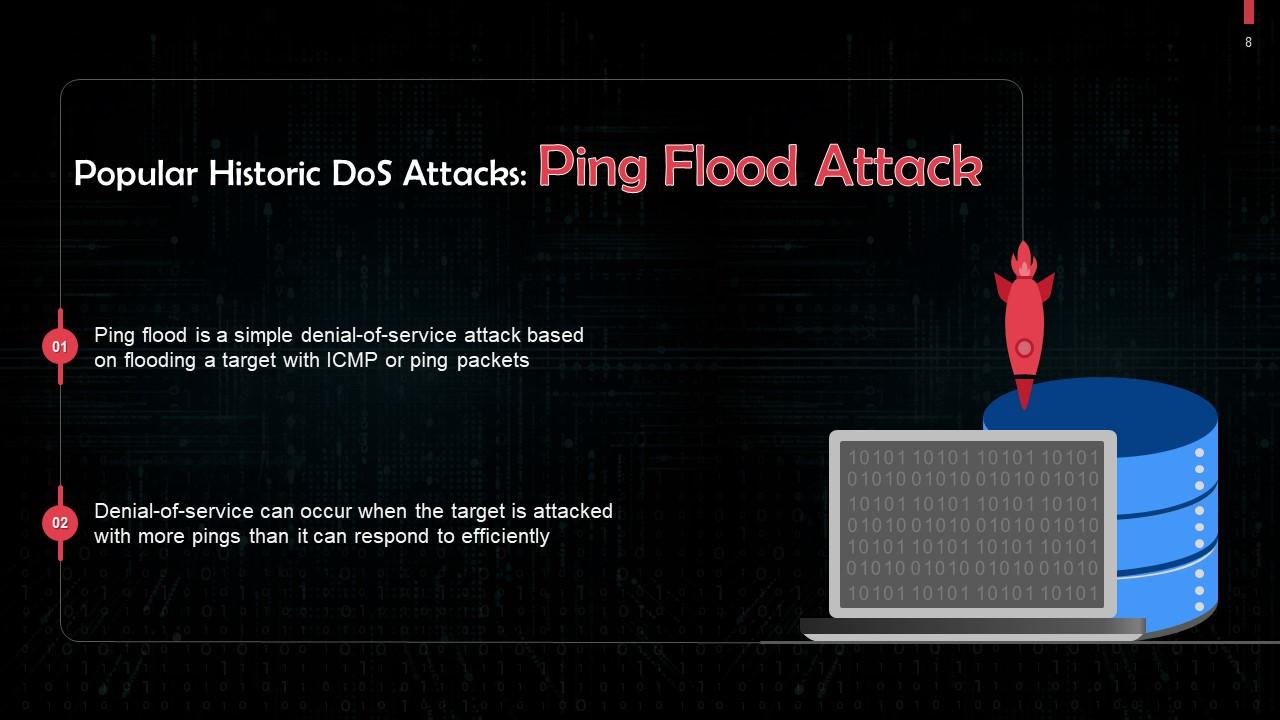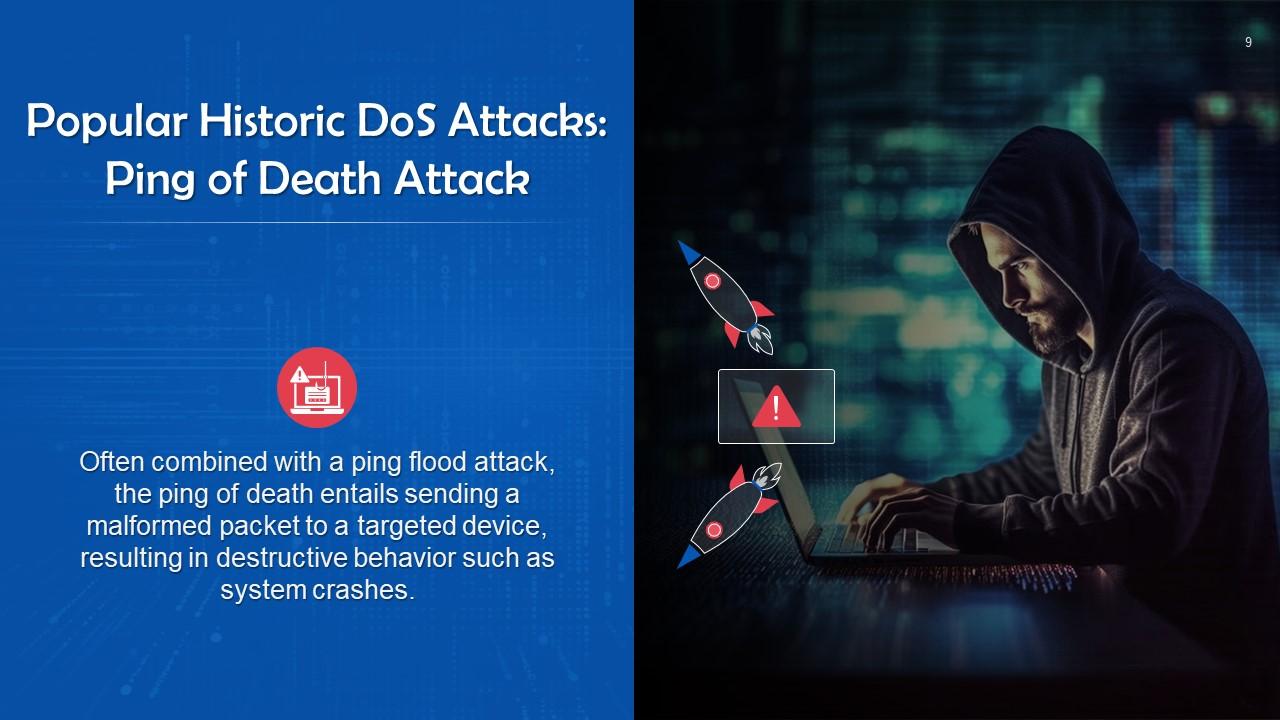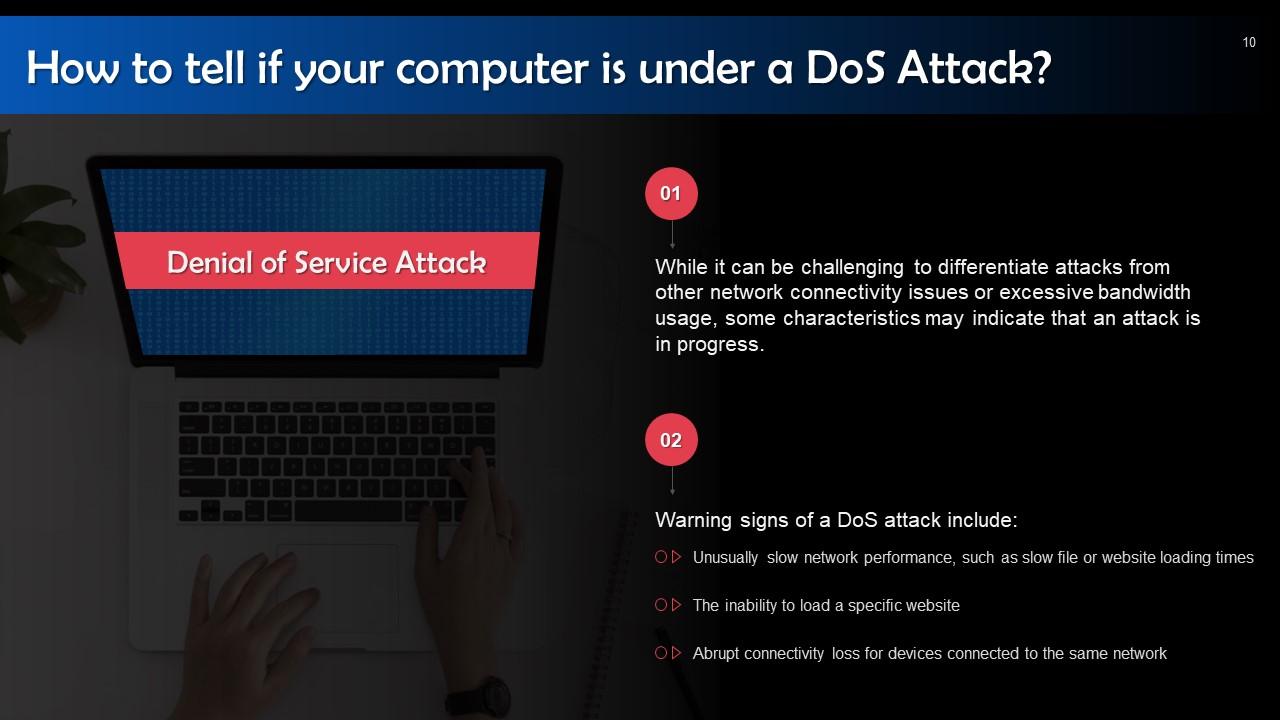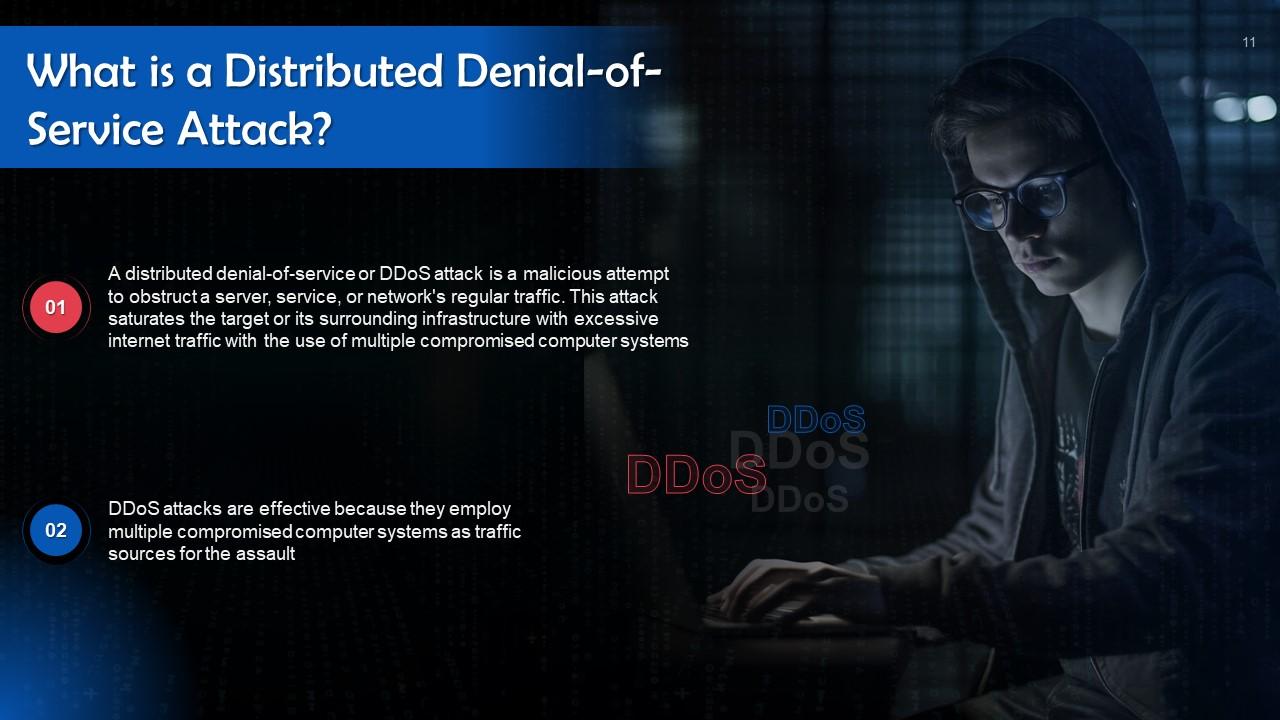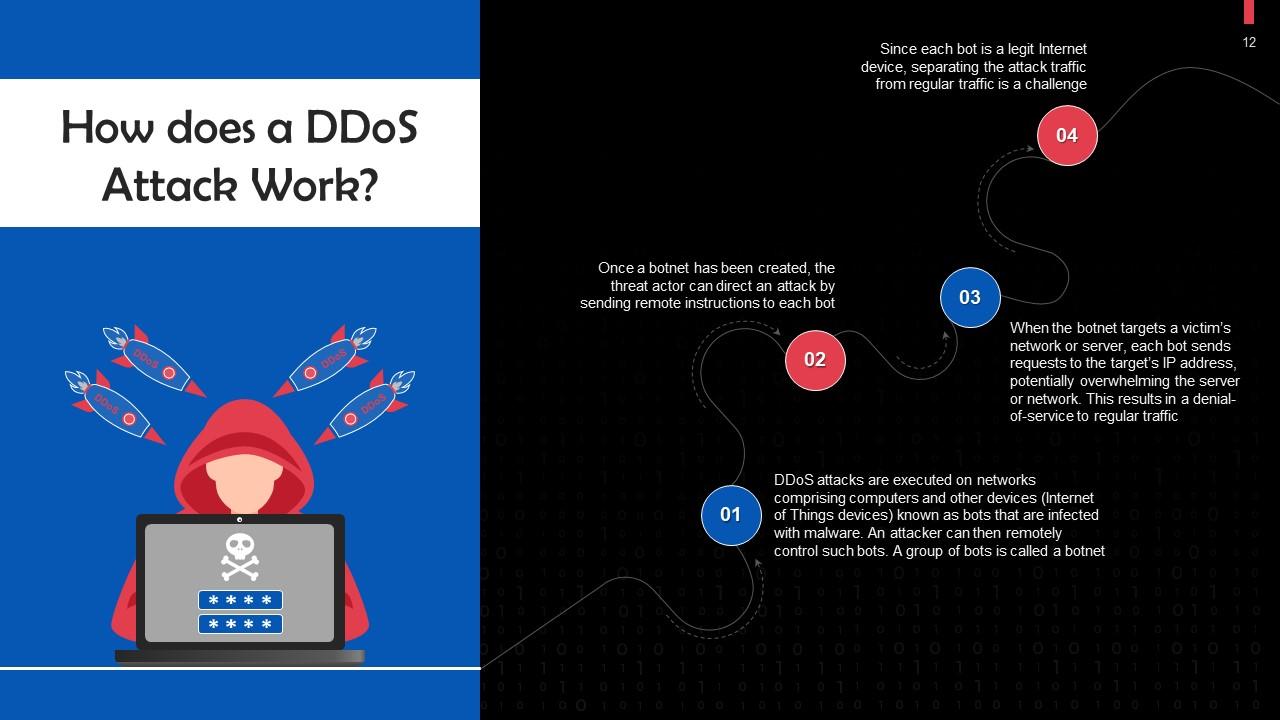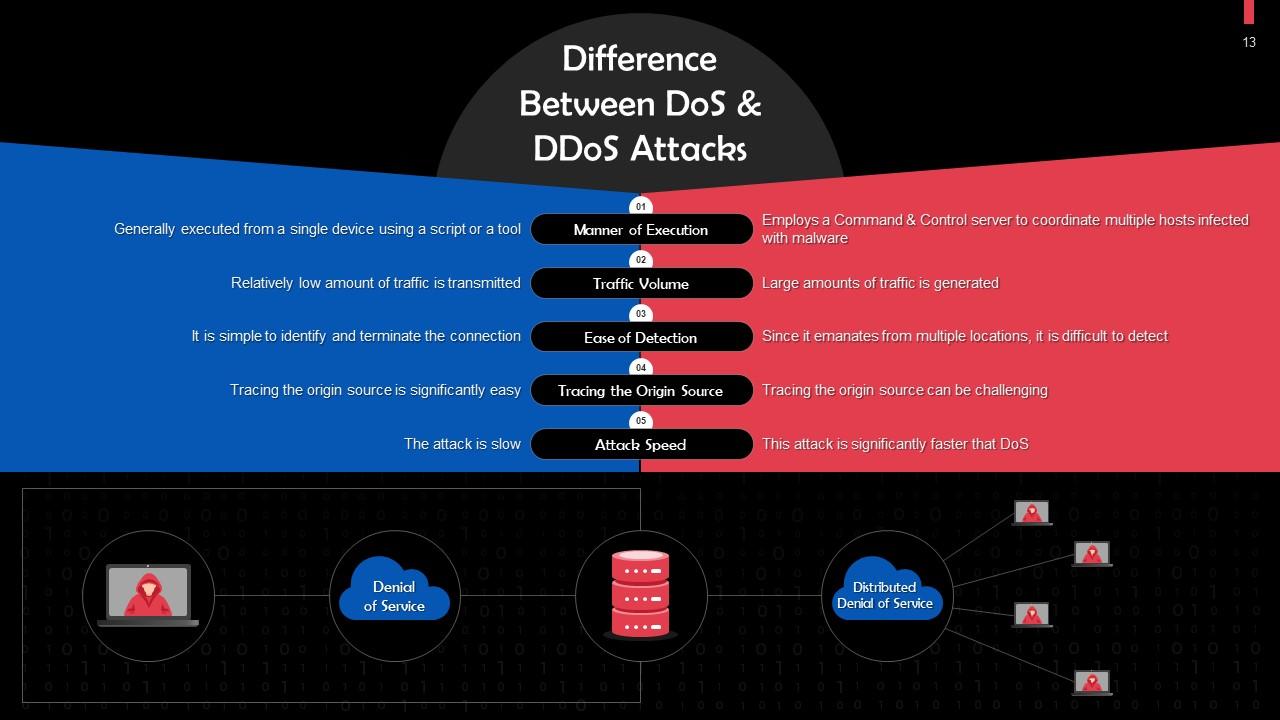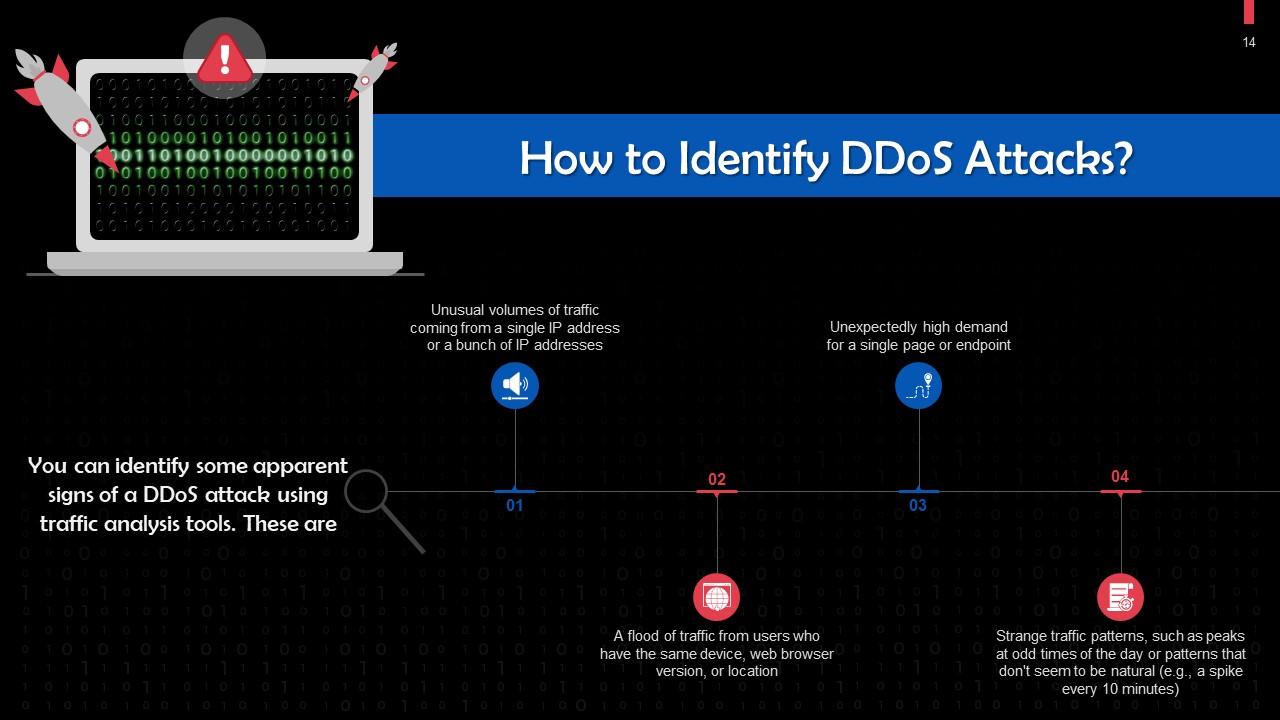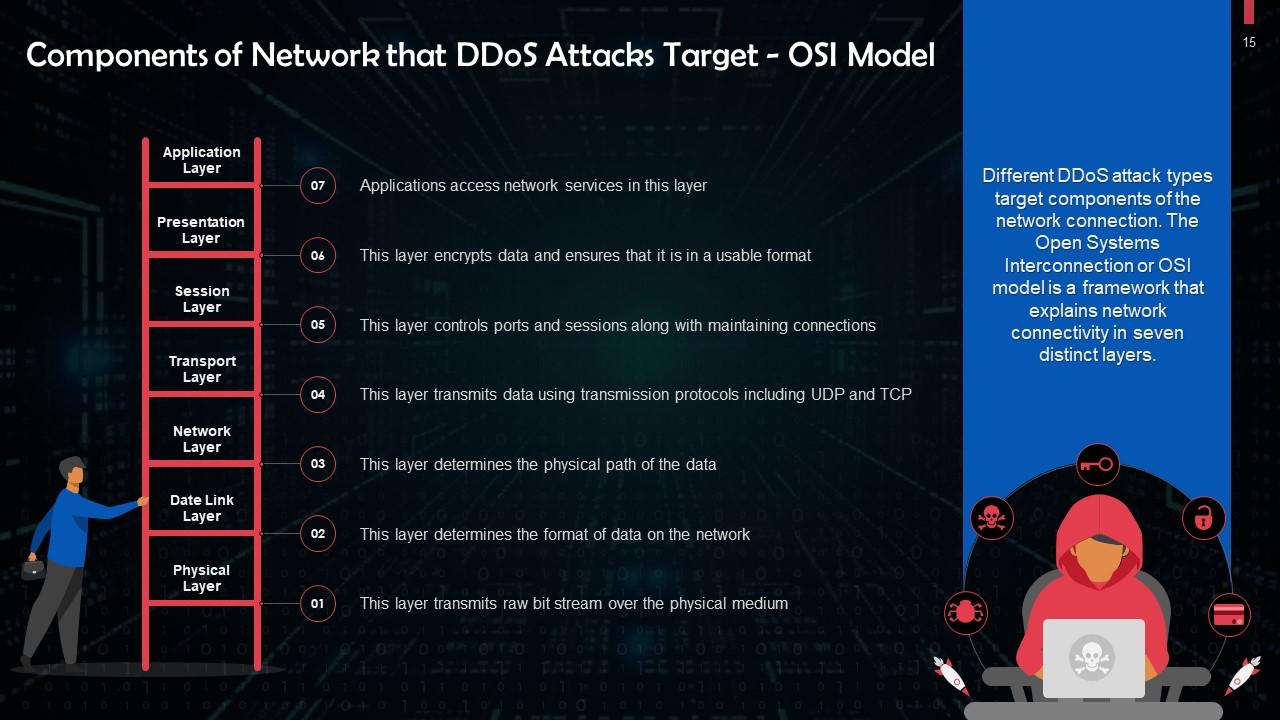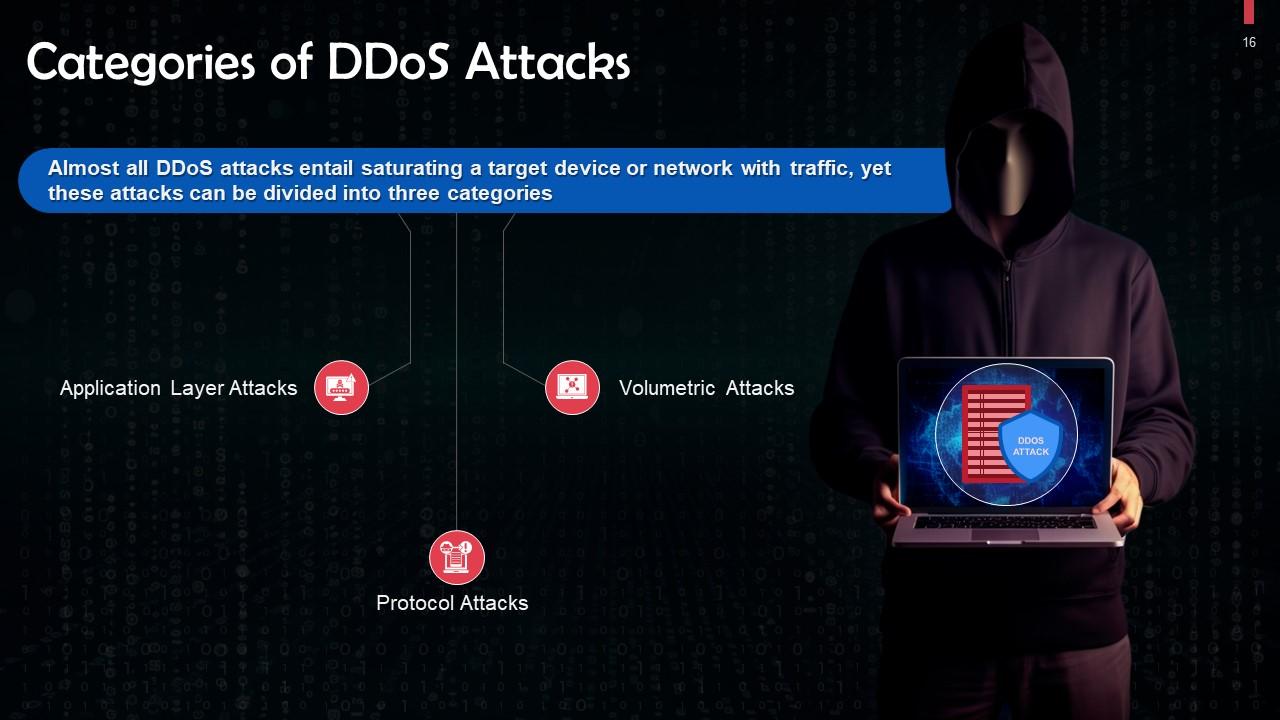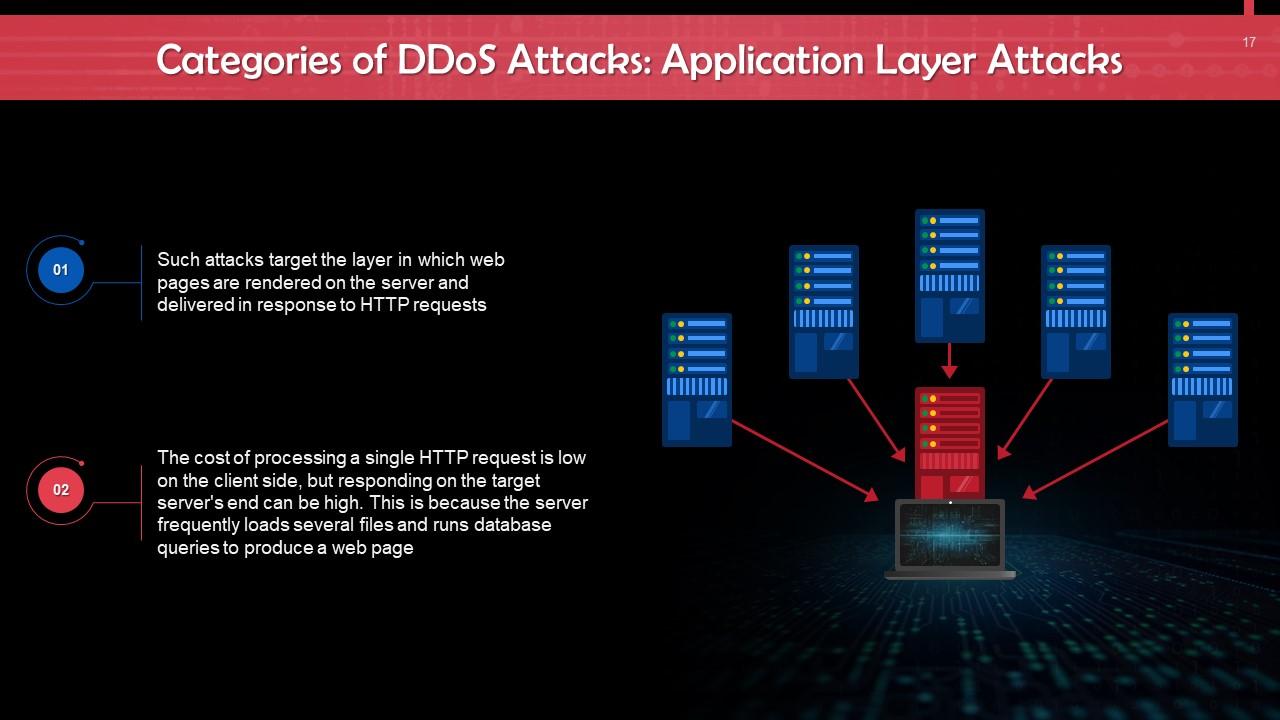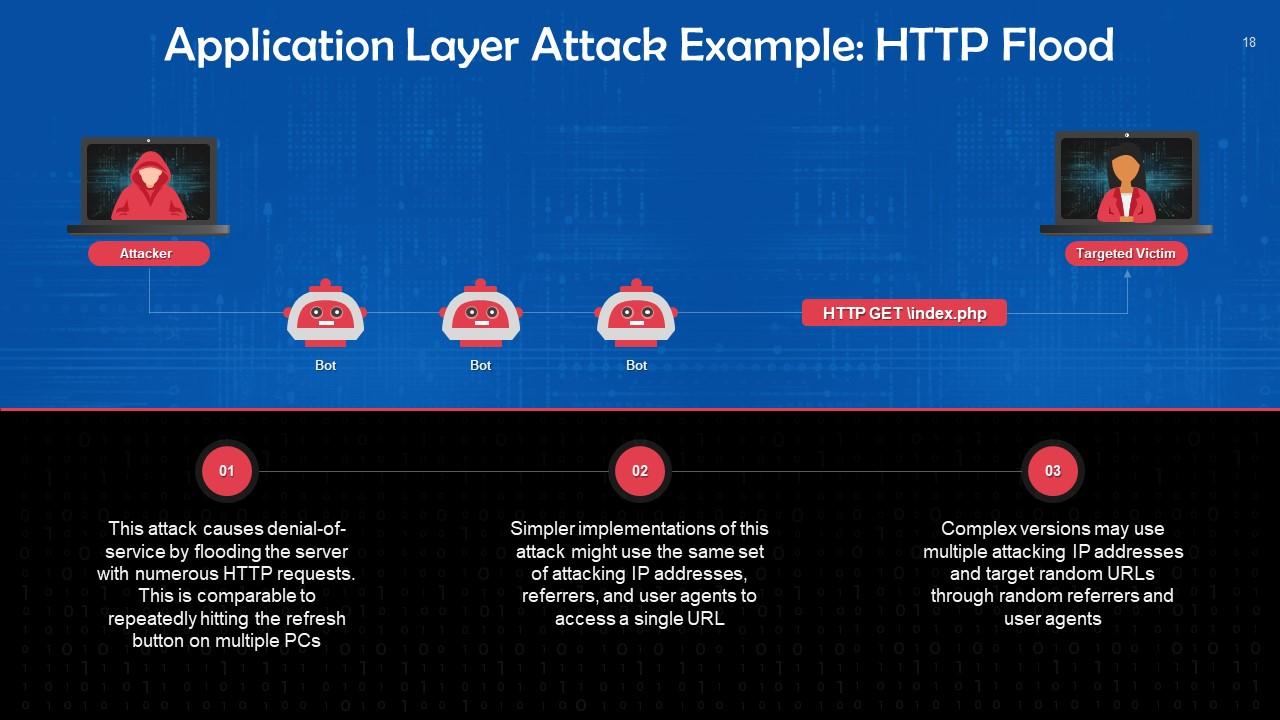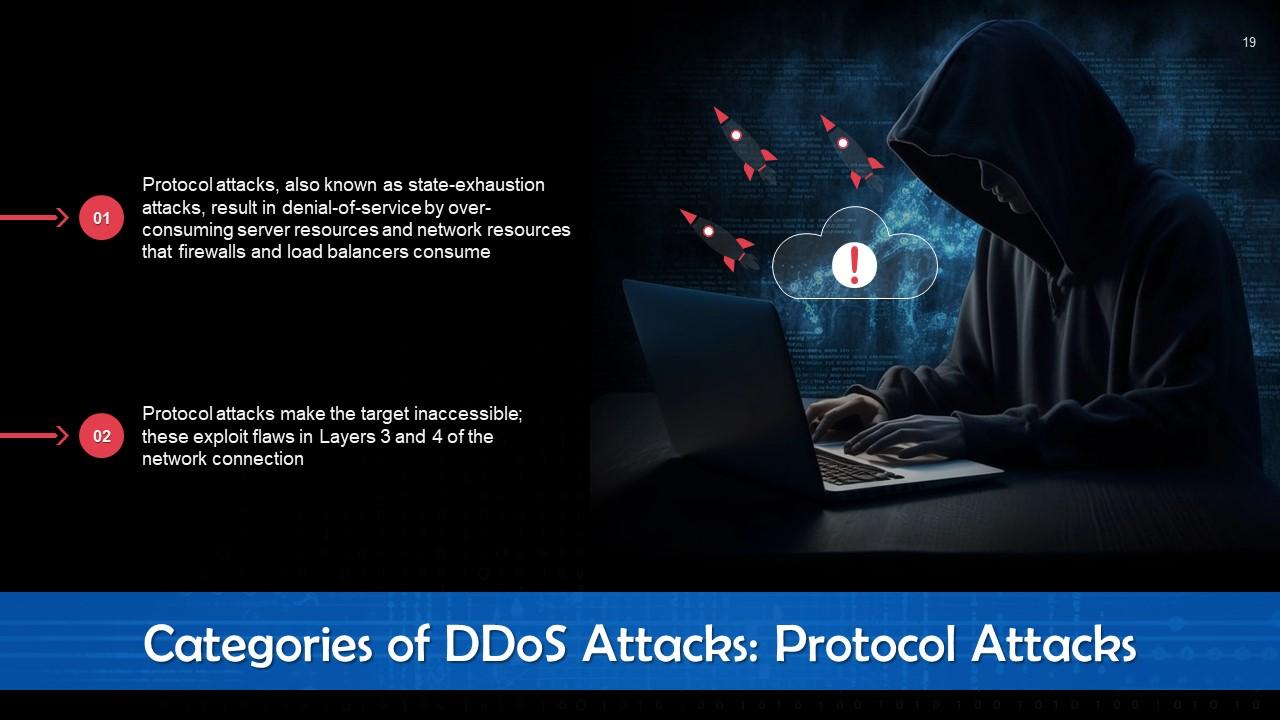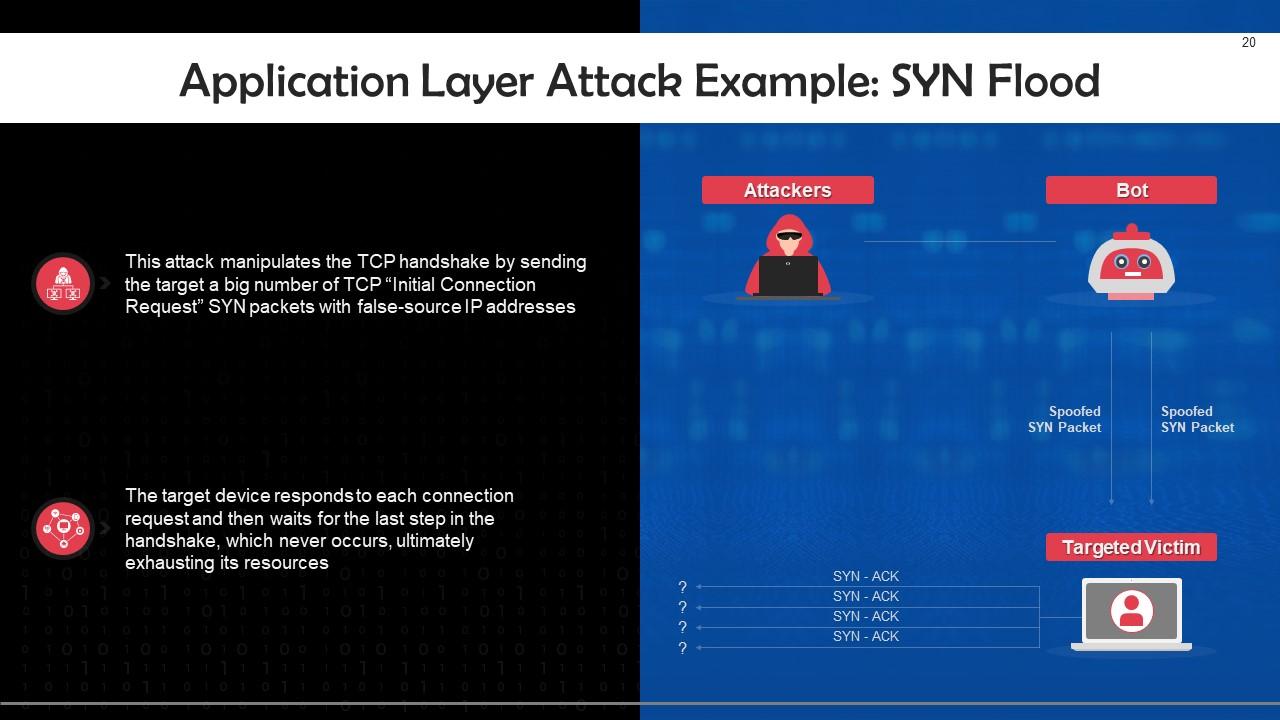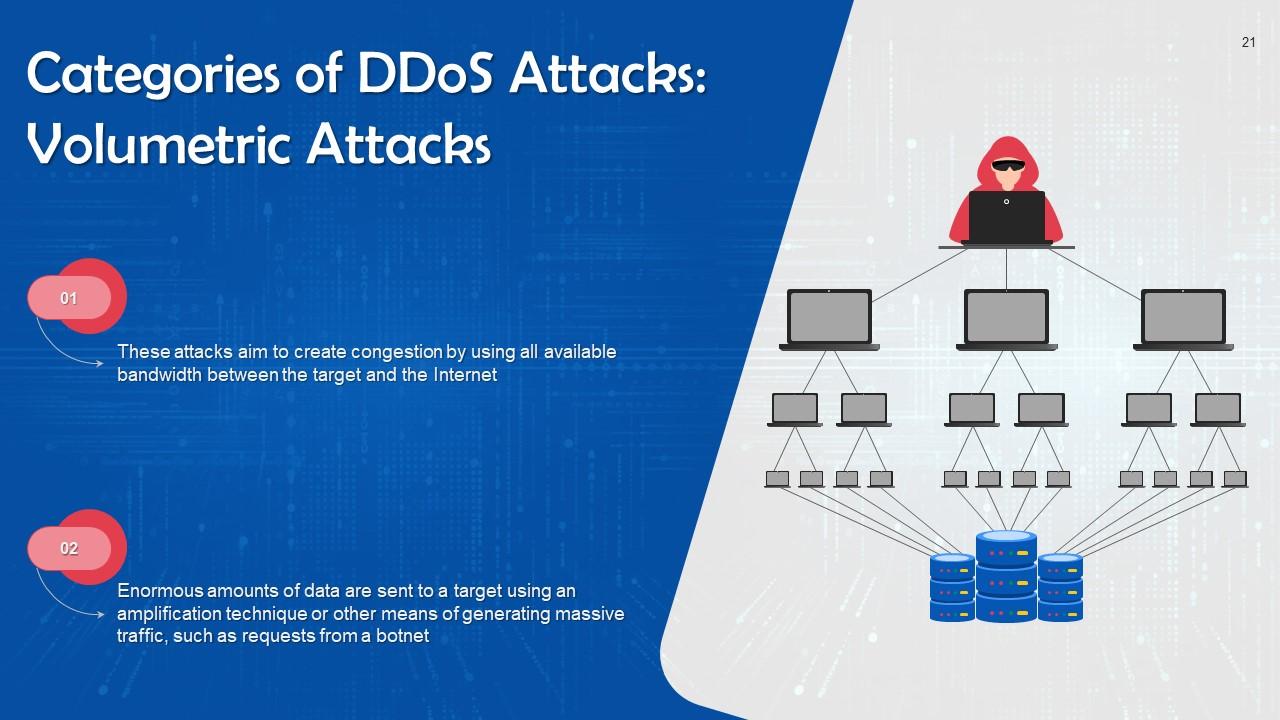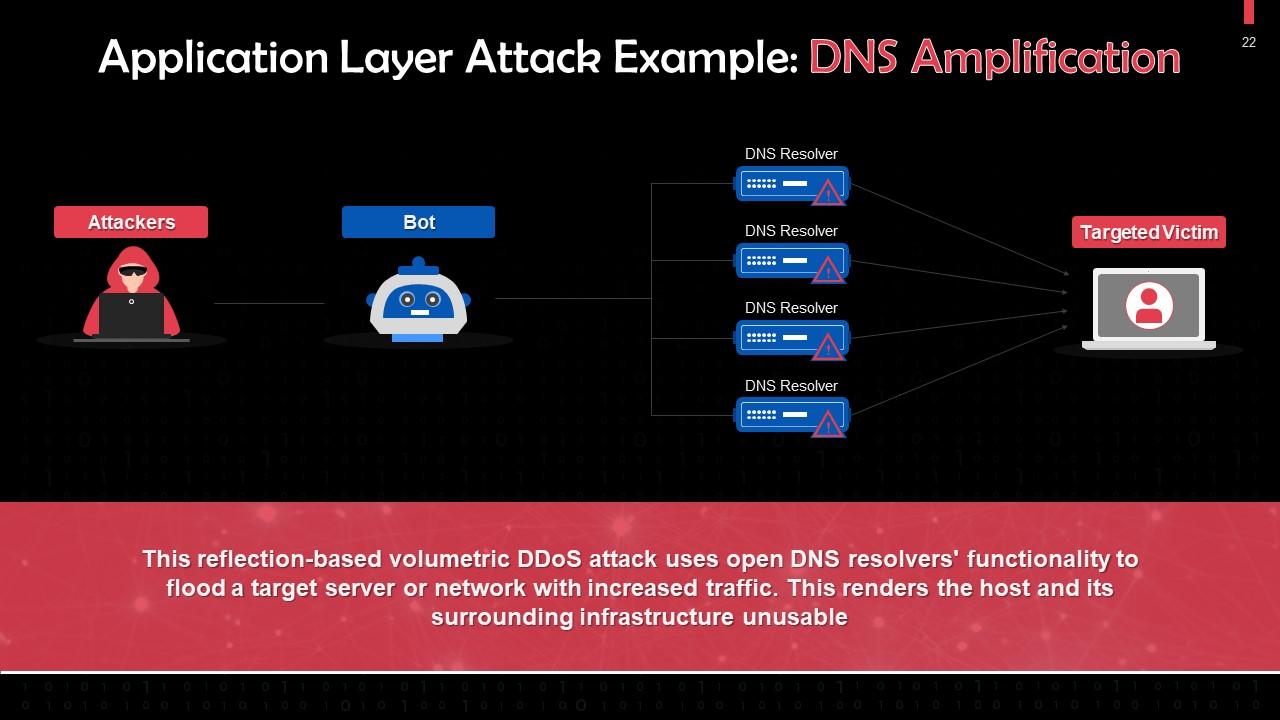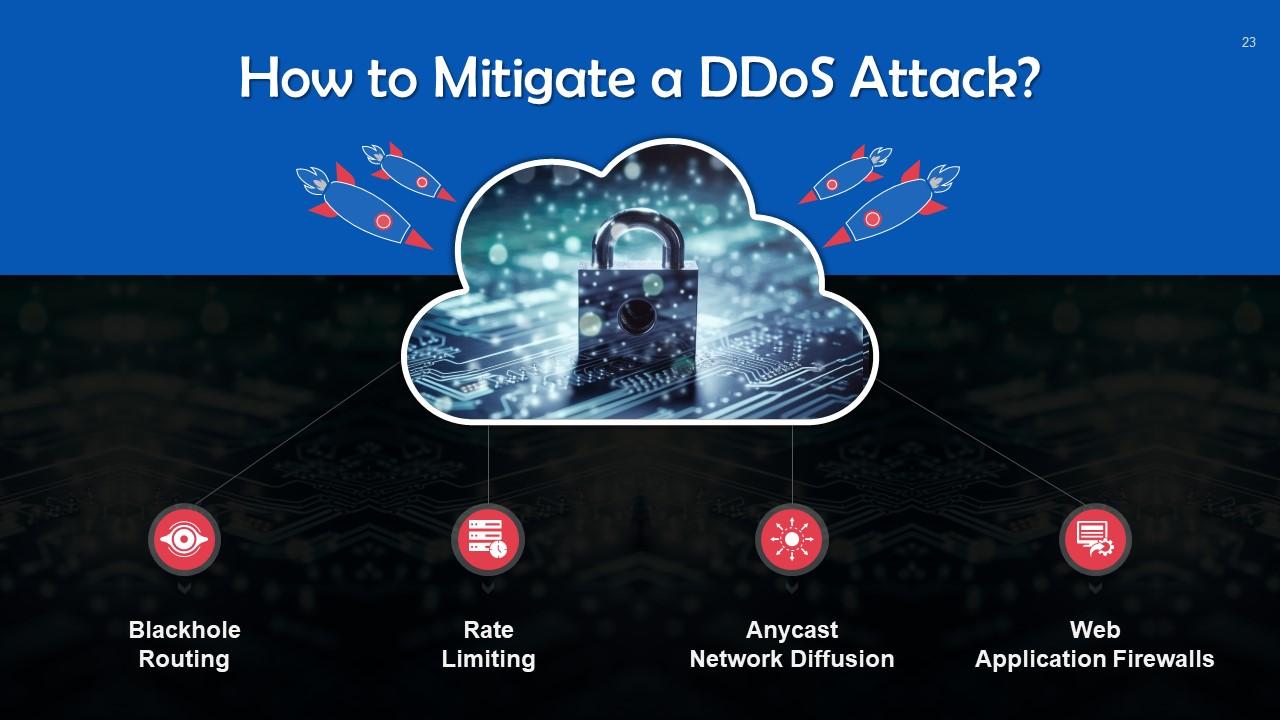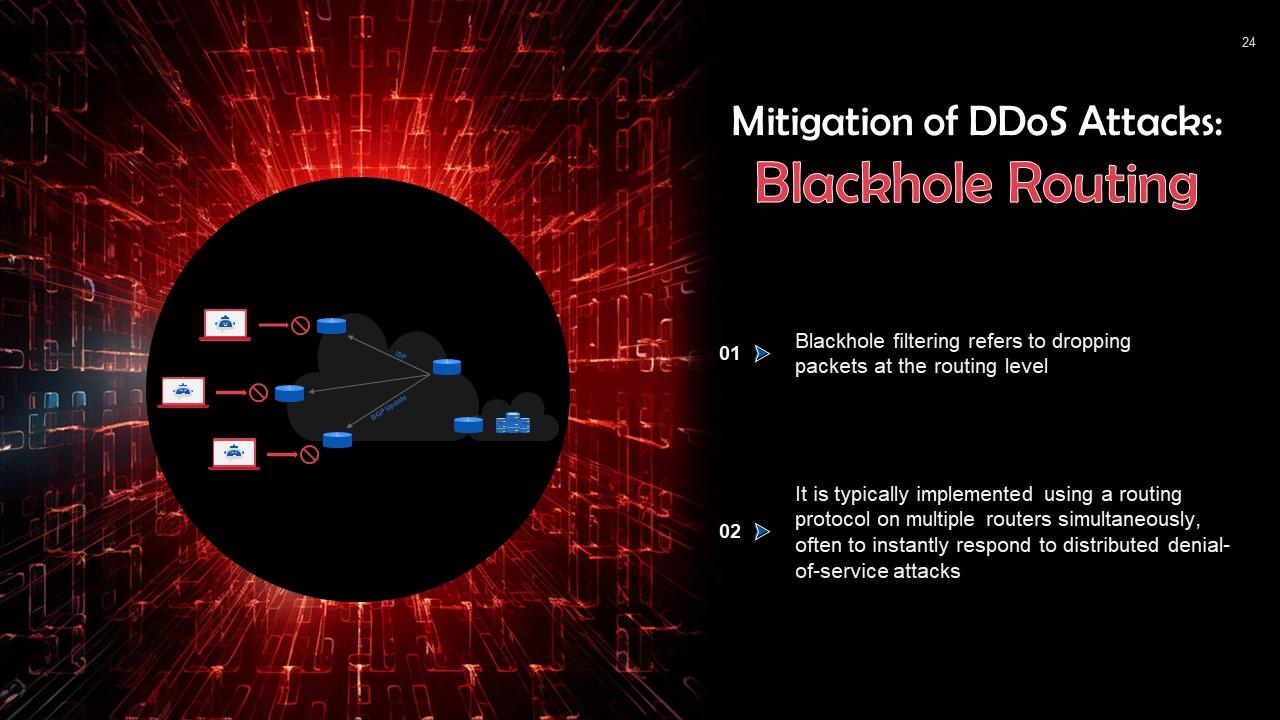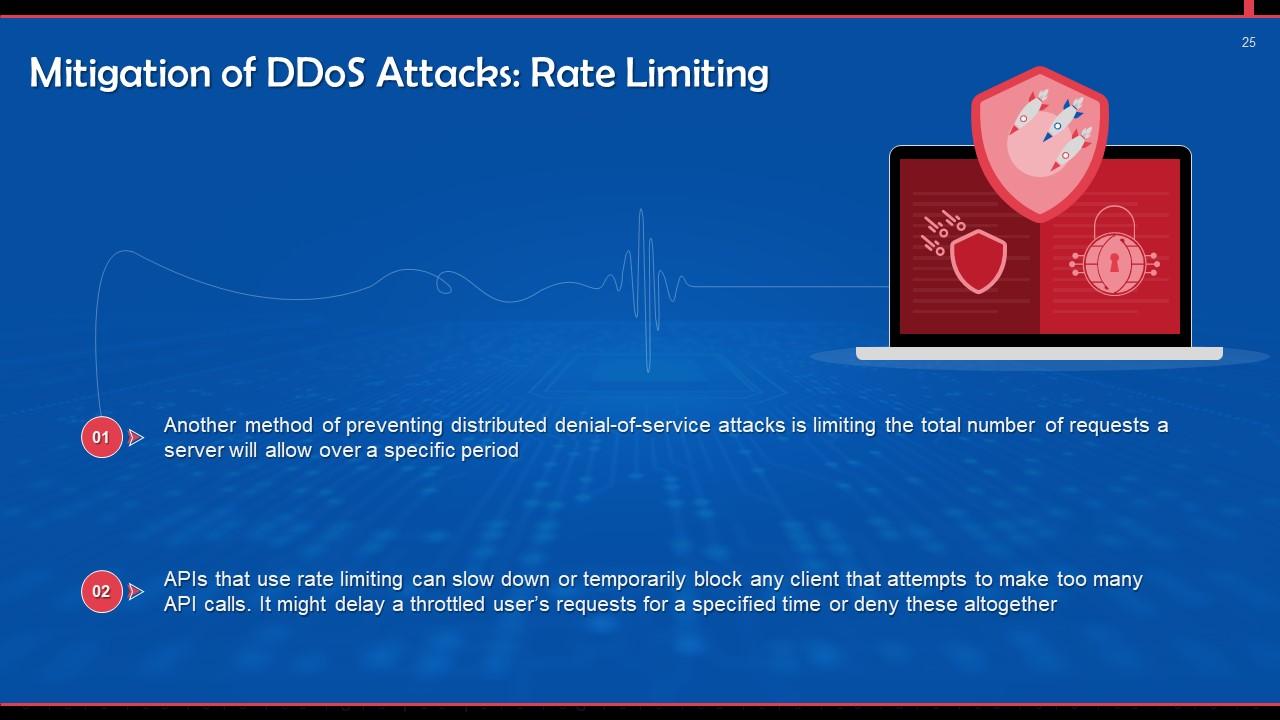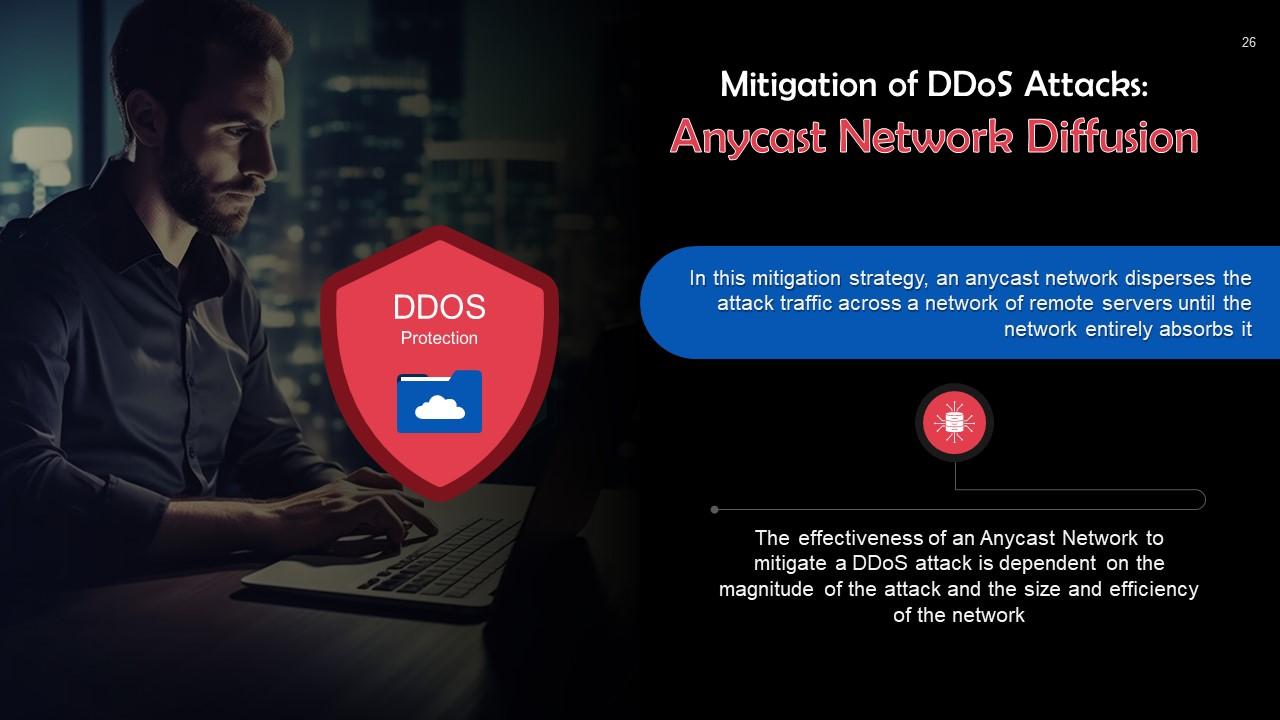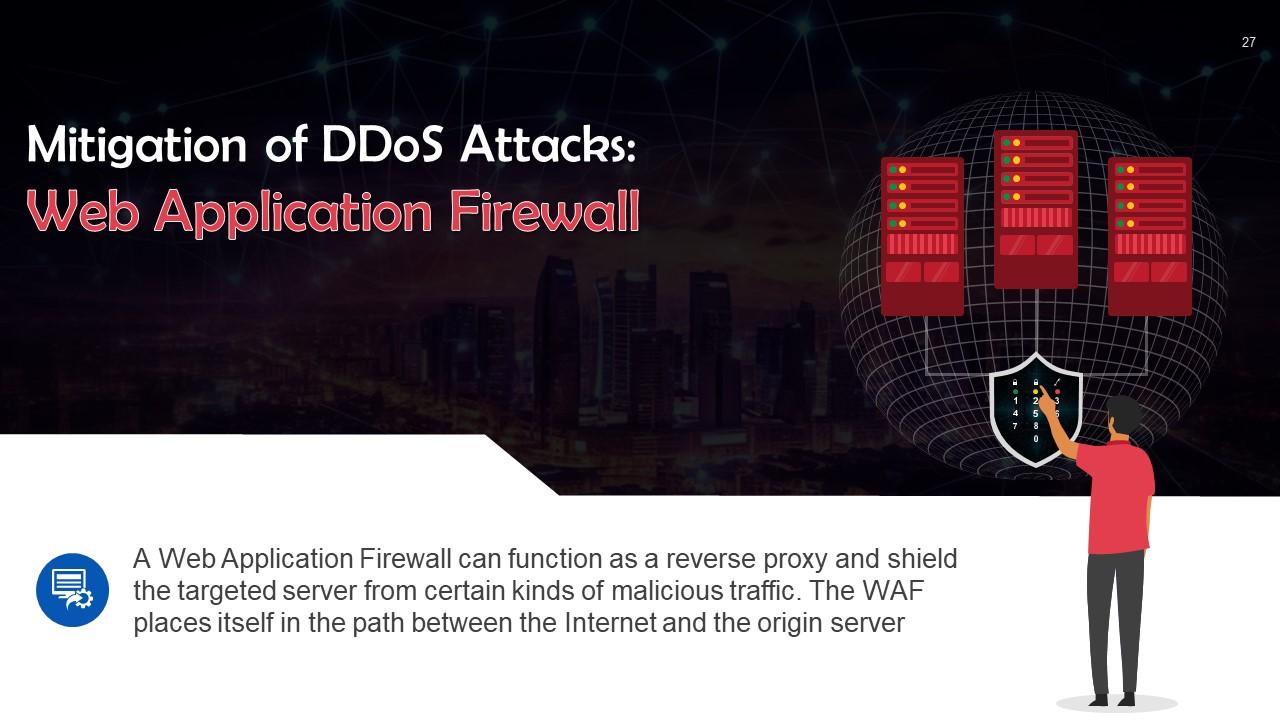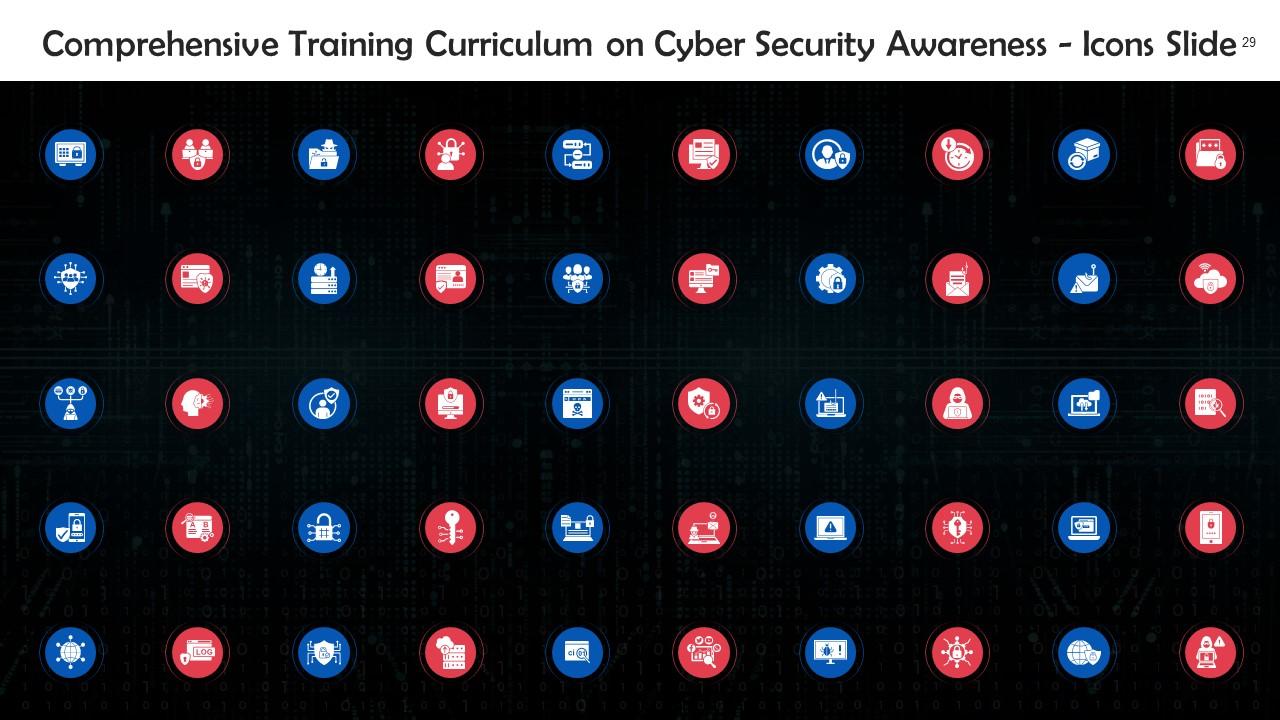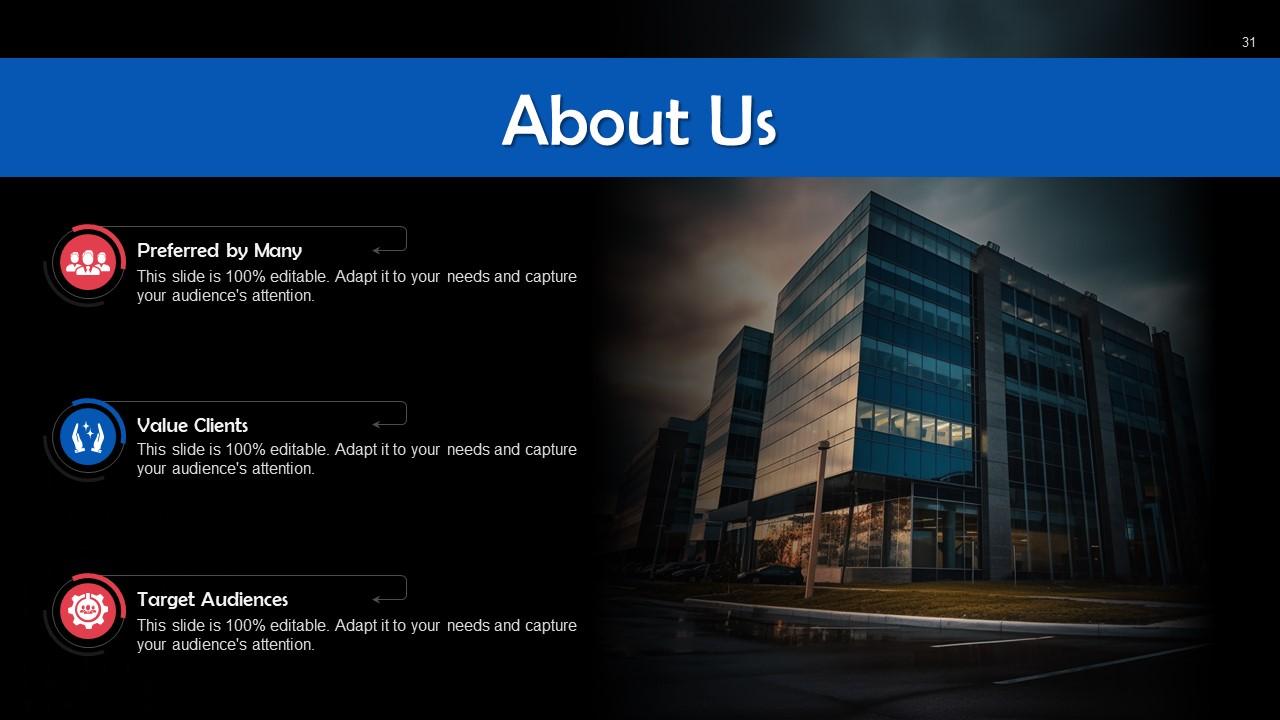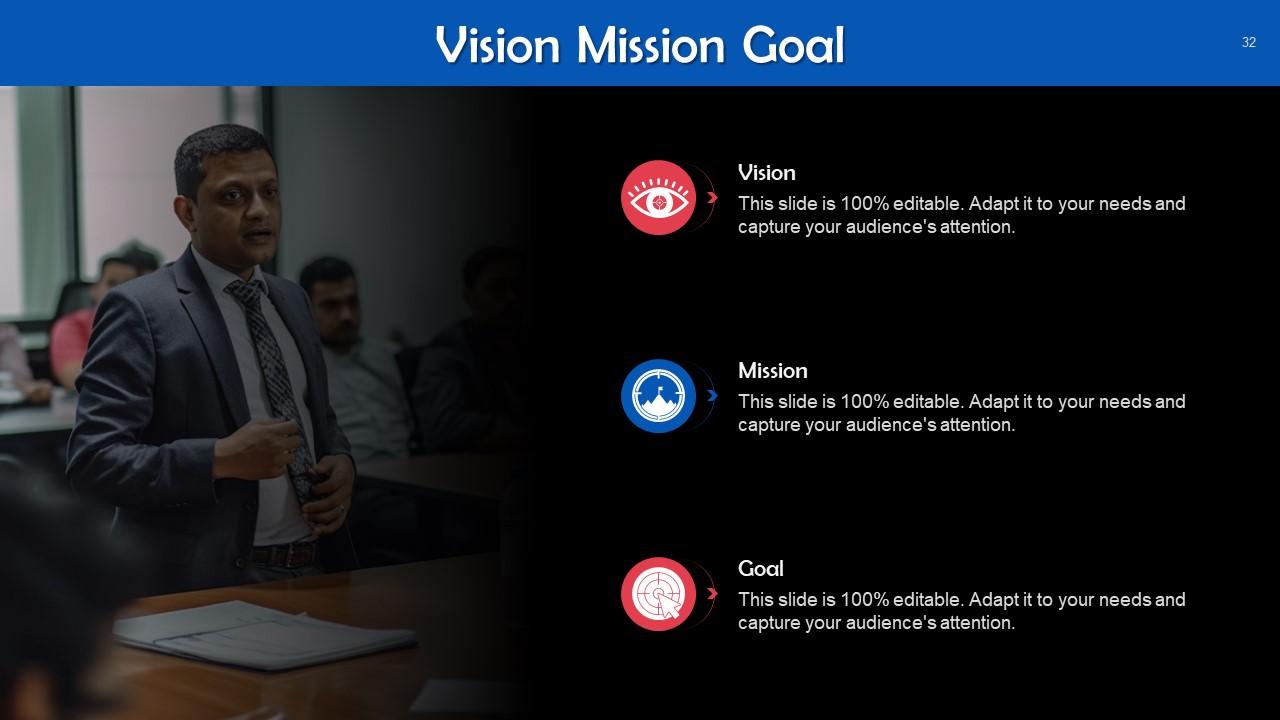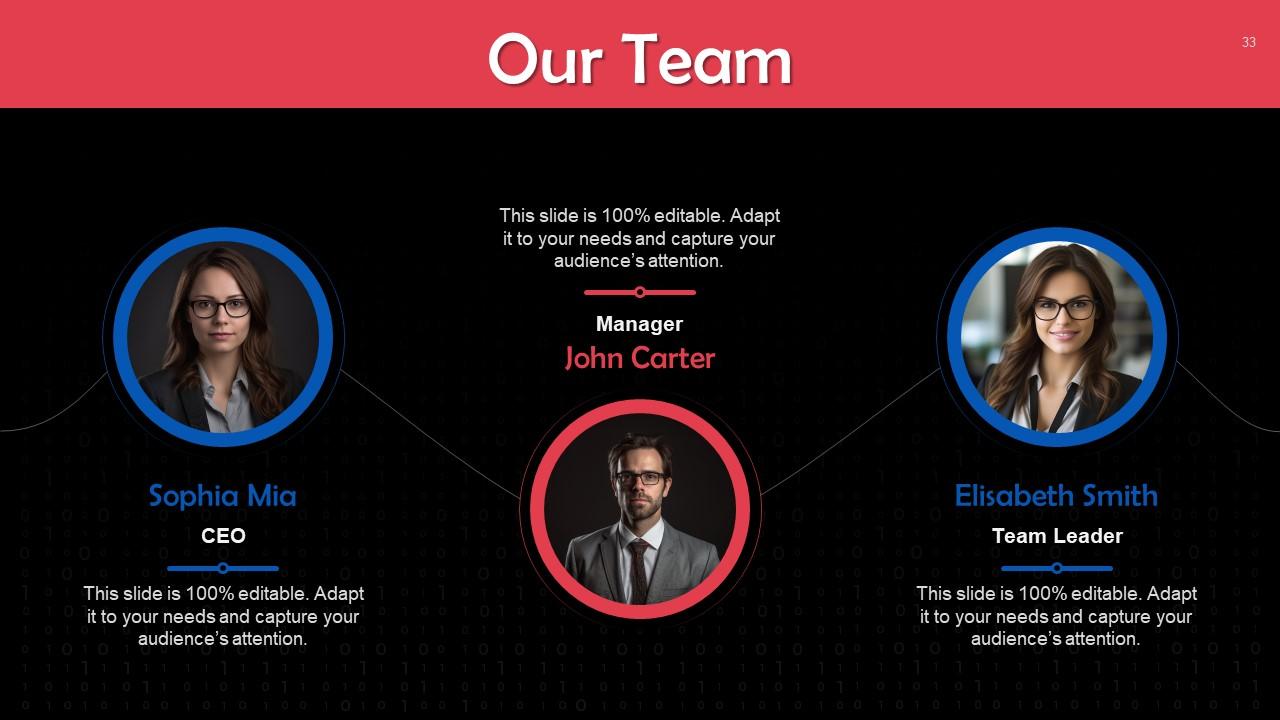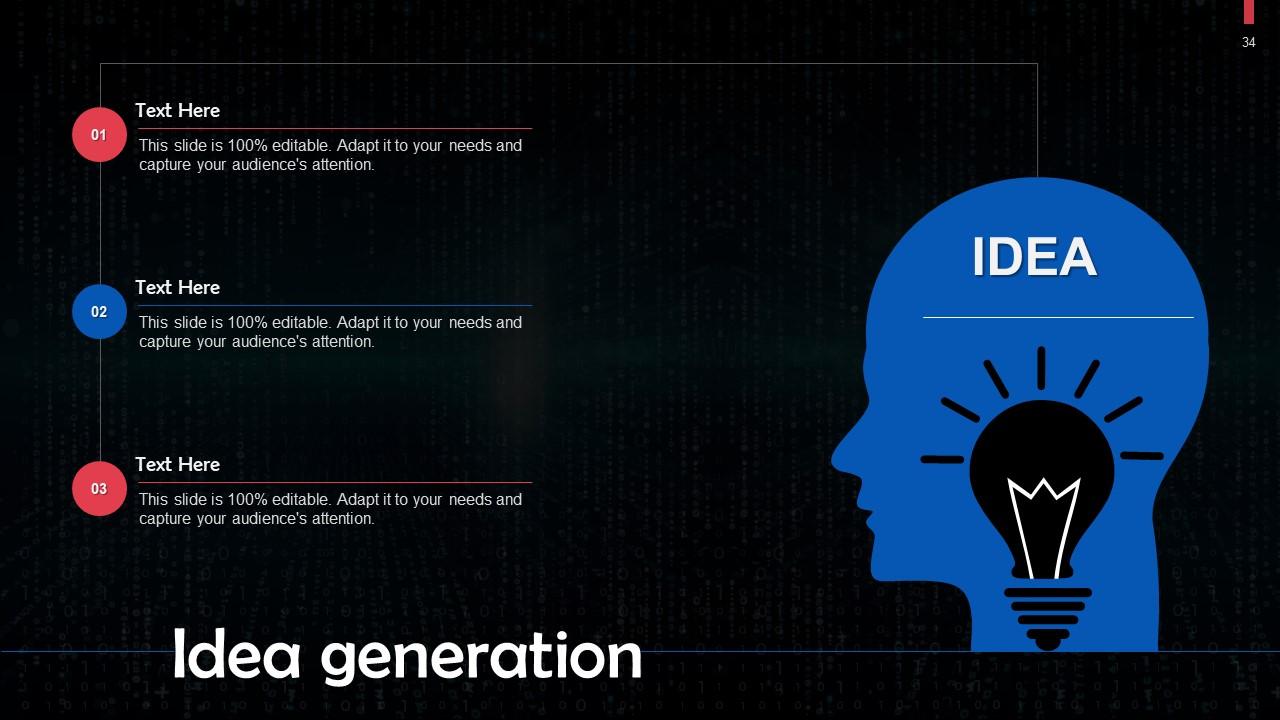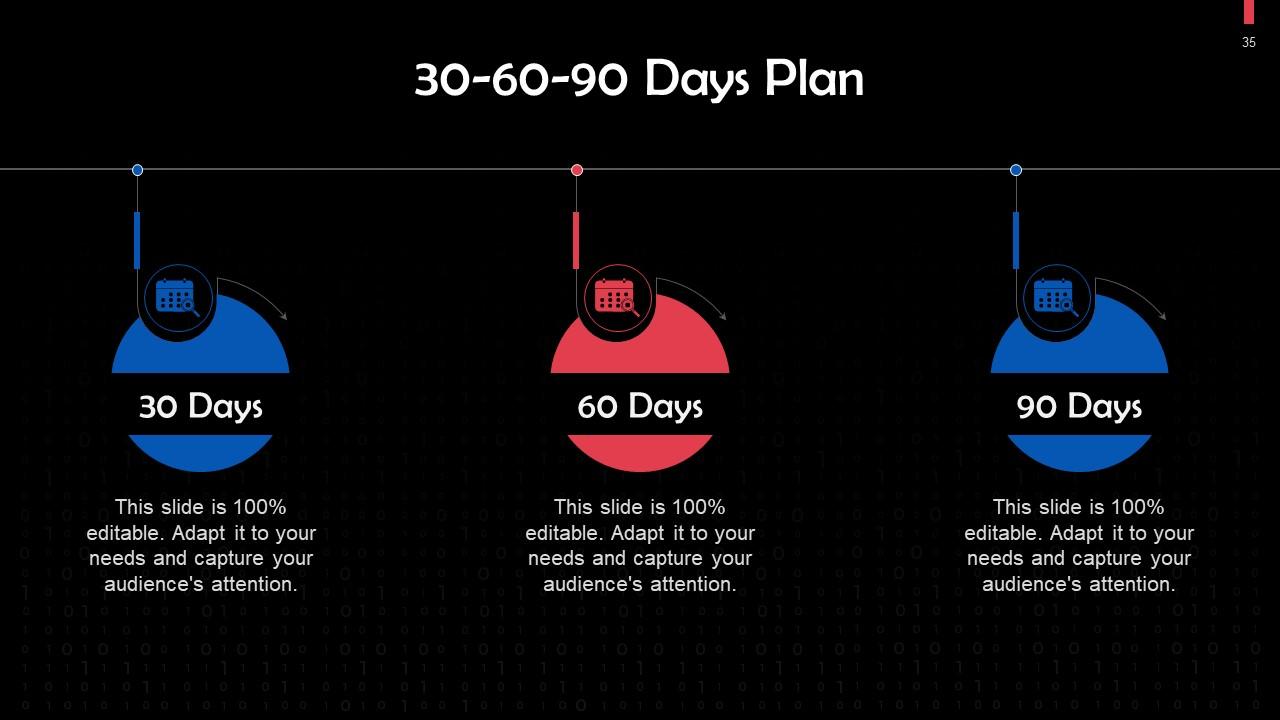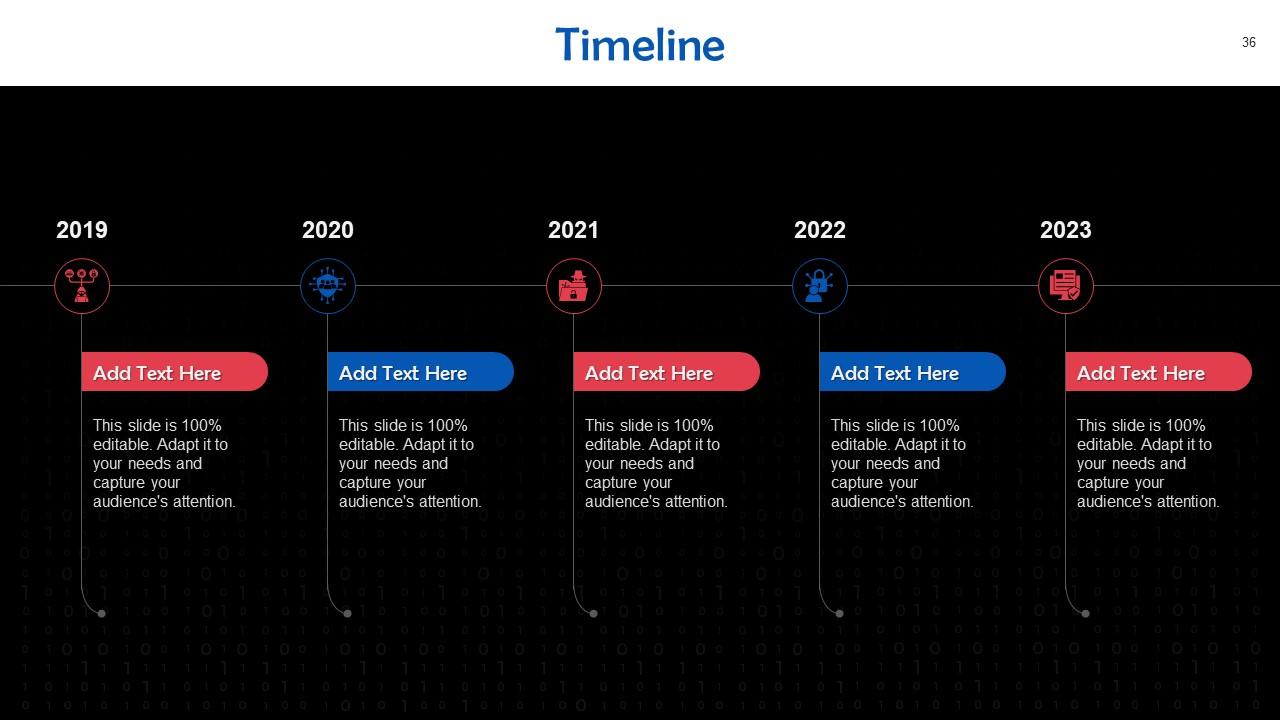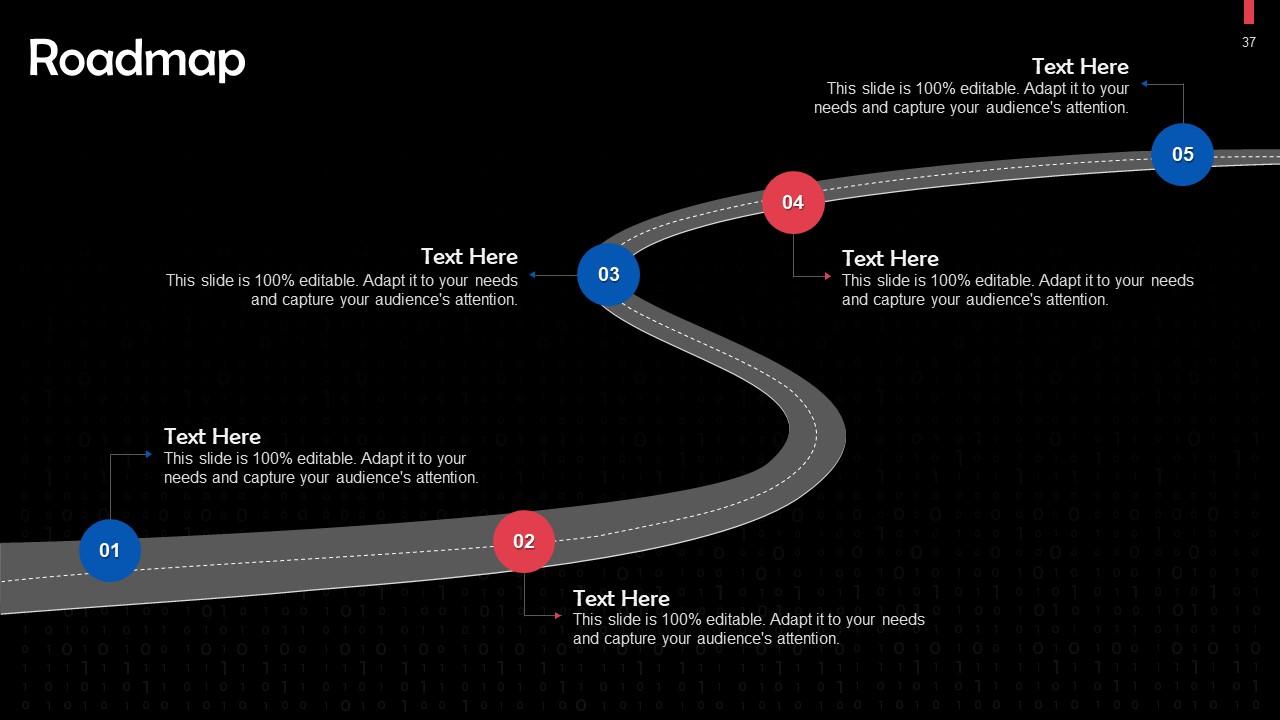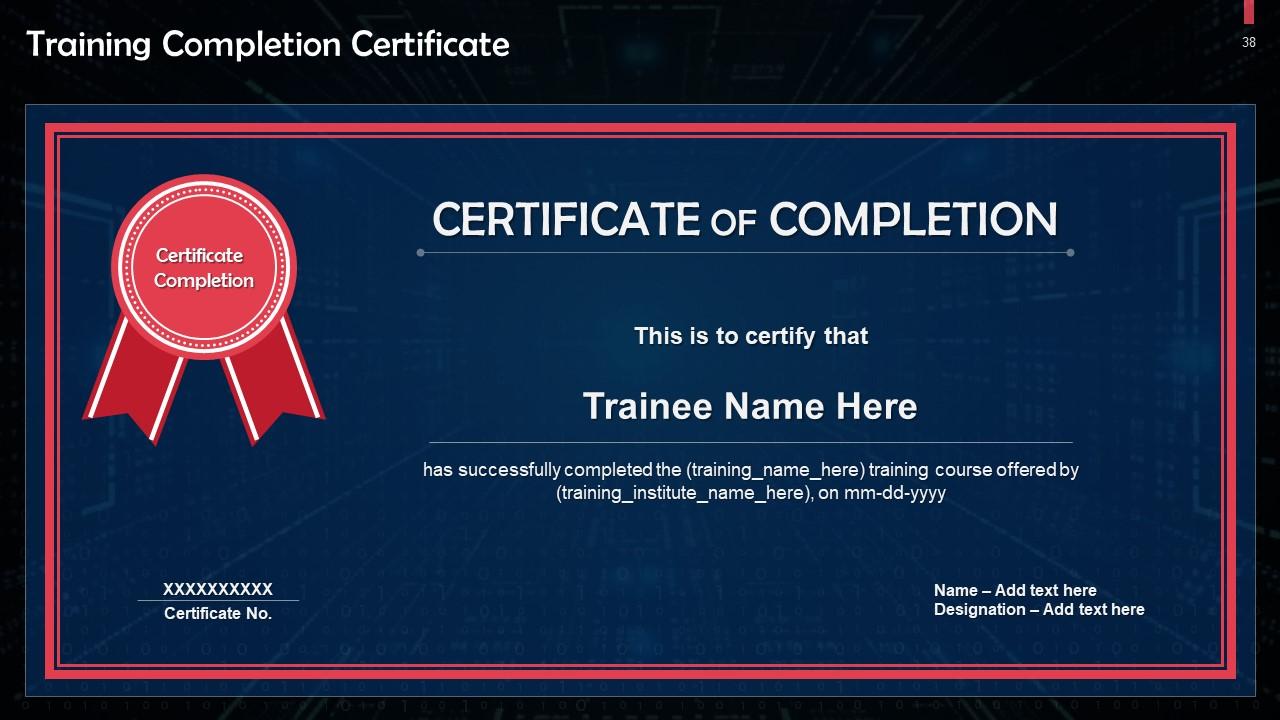DoS and DDoS Attacks In Cyber Security Training Ppt
This set of PPT slides in depth covers DoS and DDoS attacks in cybersecurity. It also covers their types and mitigation strategies to prevent them.
This set of PPT slides in depth covers DoS and DDoS attacks in cybersecurity. It also covers their types and mitigation str..
- Google Slides is a new FREE Presentation software from Google.
- All our content is 100% compatible with Google Slides.
- Just download our designs, and upload them to Google Slides and they will work automatically.
- Amaze your audience with SlideTeam and Google Slides.
-
Want Changes to This PPT Slide? Check out our Presentation Design Services
- WideScreen Aspect ratio is becoming a very popular format. When you download this product, the downloaded ZIP will contain this product in both standard and widescreen format.
-

- Some older products that we have may only be in standard format, but they can easily be converted to widescreen.
- To do this, please open the SlideTeam product in Powerpoint, and go to
- Design ( On the top bar) -> Page Setup -> and select "On-screen Show (16:9)” in the drop down for "Slides Sized for".
- The slide or theme will change to widescreen, and all graphics will adjust automatically. You can similarly convert our content to any other desired screen aspect ratio.
Compatible With Google Slides

Get This In WideScreen
You must be logged in to download this presentation.
PowerPoint presentation slides
Presenting DoS and DDoS Attacks in Cyber Security. These slides are 100 percent made in PowerPoint and are compatible with all screen types and monitors. They also support Google Slides. Premium Customer Support available. Suitable for use by managers, employees, and organizations. These slides are easily customizable. You can edit the color, text, icon, and font size to suit your requirements.
People who downloaded this PowerPoint presentation also viewed the following :
Content of this Powerpoint Presentation
Slide 2
This slide talks about DoS attacks. In a Denial-of-Service (DoS) attack, an attacker makes a computer or any other device unavailable to its intended users by interfering with its regular operation.
Slide 3
This slide explains the working of DoS attacks. A DoS attack aims to overload the capacity of a target system to deny service to additional requests.
Slide 4
This slide discusses buffer overflow attacks. In this type of DoS attack, a memory buffer overflow can lead a device to consume all its hard disk space, memory, or CPU time.
Slide 5
This slide talks about flood attacks. A malicious actor can oversaturate a server's capacity and cause denial-of-service by flooding a targeted server with an excessive number of packets.
Slide 6
This slide lists popular types of denial-of-service attacks. These are smurf attacks, ping flood attacks, and ping of death attacks.
Slide 7
This slide gives information about smurf attack. In this, a threat actor floods the targeted IP address by sending spoof packets.
Slide 8
This slide discusses Ping Flood Attack. Ping Flood is a simple denial-of-service attack based on flooding a target with ICMP or ping packets.
Slide 9
This slide gives information about ping of death attack. In this, the attacker sends a malformed packet to a targeted device.
Slide 10
This slide highlights warning signs of a DoS attack. These include: Unusually slow network performance, such as slow file or website loading times, etc.
Slide 11
This slide talks about DDoS attacks. A Distributed Denial-of-Service (DDoS) attack is a malicious attempt to obstruct a server, service, or network's regular traffic by saturating the target or its surrounding infrastructure with excessive internet traffic by using multiple compromised computer systems.
Slide 12
This slide explains the working of DDoS attacks. DDoS attacks are executed on networks comprising computers and other devices (IoT devices) known as bots that are infected with malware. An attacker can then remotely control such bots.
Slide 13
This slide highlights differences between DoS and DDoS attacks based on the manner of execution, traffic volume, ease of detection, origin source, and attack speed.
Slide 14
This slide tells us how to identify DDoS attacks using traffic analysis tools.
Slide 15
This slide highlights components of a network that can be affected by a DDoS attack. DDoS attack types target components of the network connection. The OSI model is a framework that explains network connectivity in seven distinct layers.
Slide 16
This slide lists the categories of DDoS Attacks. These are: Application layer, protocol, and volumetric attacks.
Slide 17
This slide gives us an overview of application layer attacks. These attacks target the layer where web pages are generated on the server and delivered in response to HTTP requests.
Slide 18
This slide discusses HTTP flood attack. This attack causes denial-of-service by flooding the server with numerous HTTP requests. This is comparable to repeatedly hitting the refresh button on multiple PCs.
Slide 19
This slide tells us gives an overview of protocol attacks. Protocol assaults, also known as state-exhaustion attacks, result in denial-of-service by over-consuming server resources and network resources used by firewalls and load balancers.
Slide 20
This slide discusses SYN Flood Attack. This attack manipulates the TCP handshake by sending the target a large number of TCP “Initial Connection Request” SYN packets with false-source IP addresses.
Slide 21
This slide tells us gives an overview of volumetric attacks. These attacks aim to create congestion by using all available bandwidth between the target and the Internet.
Slide 22
This slide discusses DNS Amplification attack. This attack uses open DNS resolvers' functionality to flood a target server or network with increased traffic.
Slide 23
This slide lists ways to mitigate a DDoS attack. These are: Blackhole routing, rate limiting, anycast network diffusion, and web application firewalls.
Slide 24
This slide discusses how blackhole routing can help mitigate the risk of a DDoS attack. Blackhole filtering refers to dropping packets at the routing level.
Slide 25
This slide talks about rate limiting to prevent DDoS attacks. APIs that use rate limiting can slow down or temporarily block any client that attempts to make too many API calls.
Slide 26
This slide discusses how Anycast Network Diffusion mitigates the risk of DDoS attack. In this mitigation strategy, an Anycast Network disperses the attack traffic across a network of remote servers until the network entirely absorbs it.
Slide 27
This slide shows how WAFs mitigate the risk of a DDoS attack. A Web Application Firewall can function as a reverse proxy and shield the targeted server from malicious traffic.
DoS and DDoS Attacks In Cyber Security Training Ppt with all 47 slides:
Use our DoS and DDoS Attacks In Cyber Security Training Ppt to effectively help you save your valuable time. They are readymade to fit into any presentation structure.
-
Excellent design and quick turnaround.
-
Great product with effective design. Helped a lot in our corporate presentations. Easy to edit and stunning visuals.



